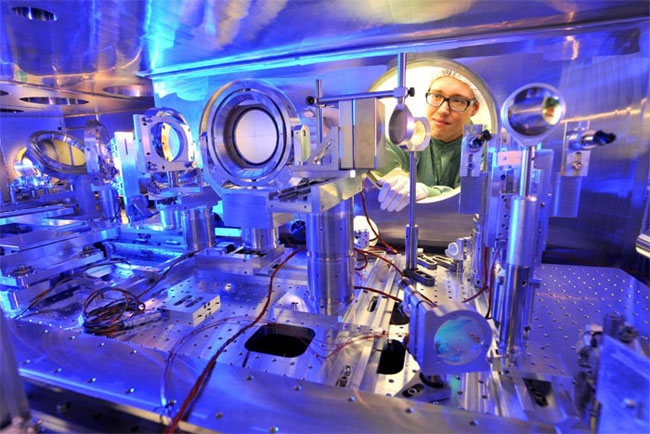Laser plasma acceleration, which has a smaller footprint and higher peak currents than conventional electron accelerators, could be the basis for the next generation of compact light sources. To make laser plasma acceleration practical for future applications, researchers have developed a method to increase beam stability and quality. They have shown that in order to generate high charge beams with a small energy spread, laser-plasma accelerators have to be operated at the optimal loading condition.
Electron accelerators are an indispensable research tool; however, even the smallest versions of these super microscopes can be the size of a soccer field. Laser accelerators could offer a scaled-down alternative, if the challenge of creating a stable and reliable electron beam is met.
According to researchers at Helmholtz-Zentrum Dresden-Rossendorf (HZDR), scaling these accelerators to the nanocoulomb range could yield hundreds of kiloamperes peak current and stimulate the next generation of radiation sources covering high-field terahertz, high-brightness x-ray and γ-ray sources, compact free-electron lasers and laboratory-size beam-driven plasma accelerators. However, accelerators generating such currents operate in the beam loading regime where the accelerating field is strongly modified by the self-fields of the injected bunch. This can potentially deteriorate key beam parameters.

In a so-called target chamber, the light pulse of the high-performance laser DRACO hits a gas-jet. The aim is to accelerate electrons to almost the speed of light on a distance shorter than a pencil's width. Courtesy of HZDR/F. Bierstedt.
“These higher currents create an electric self-field strong enough to superimpose and disturb the laser-driven wave, distorting thereby the beam,” said researcher Jurjen Pieter Couperus. “The bundle is stretched out and not accelerated properly. The electrons therefore have different energies and quality levels.”
In order to be useful as a tool for multiple, ongoing experiments, each beam must have the same parameters.
“The electrons have to be in the right place at the right time,” said Couperus.
The researchers demonstrated that, if appropriately controlled, the beam loading effect could be used to improve the accelerator’s performance. Self-truncated ionization injection enabled loading of charges of approximately 0.5 nanocoulombs within a mono-energetic peak.
In our experiments, we found out that conditions are ideal at a charge of about 300 picocoulomb.
— Arie Irman, Researcher
As the energy balance was reached, researchers showed that the accelerator could operate at the theoretically predicted optimal loading condition and that the final energy spread could be minimized.
“In our experiments, we found out that conditions are ideal at a charge of about 300 picocoulomb. Any deviation from it — if we add more or fewer electrons to the wave — results in a broader spread of energy, which impairs beam quality,” said researcher Arie Irman.
According to the team’s calculations, experiments under ideal conditions would yield peak currents of about 50 kiloamperes.
“To put this in context, only about 0.6 kiloamperes flow through the standard overhead line for a German high-speed train,” said Couperus.
Couperus is confident that the team can beat its own record. “Using our findings and a laser pulse in the petawatt range, which our high-intensity laser DRACO can achieve, we should be able to generate a high-quality electron beam with peak currents of 150 kiloamperes,” he said. “That would exceed modern large-scale research accelerators by about two orders of magnitude.”
Such an achievement, the researchers believe, could pave the way for the next generation of compact radiation sources.
The research was published in Nature Communications (doi:10.1038/s41467-017-00592-7).